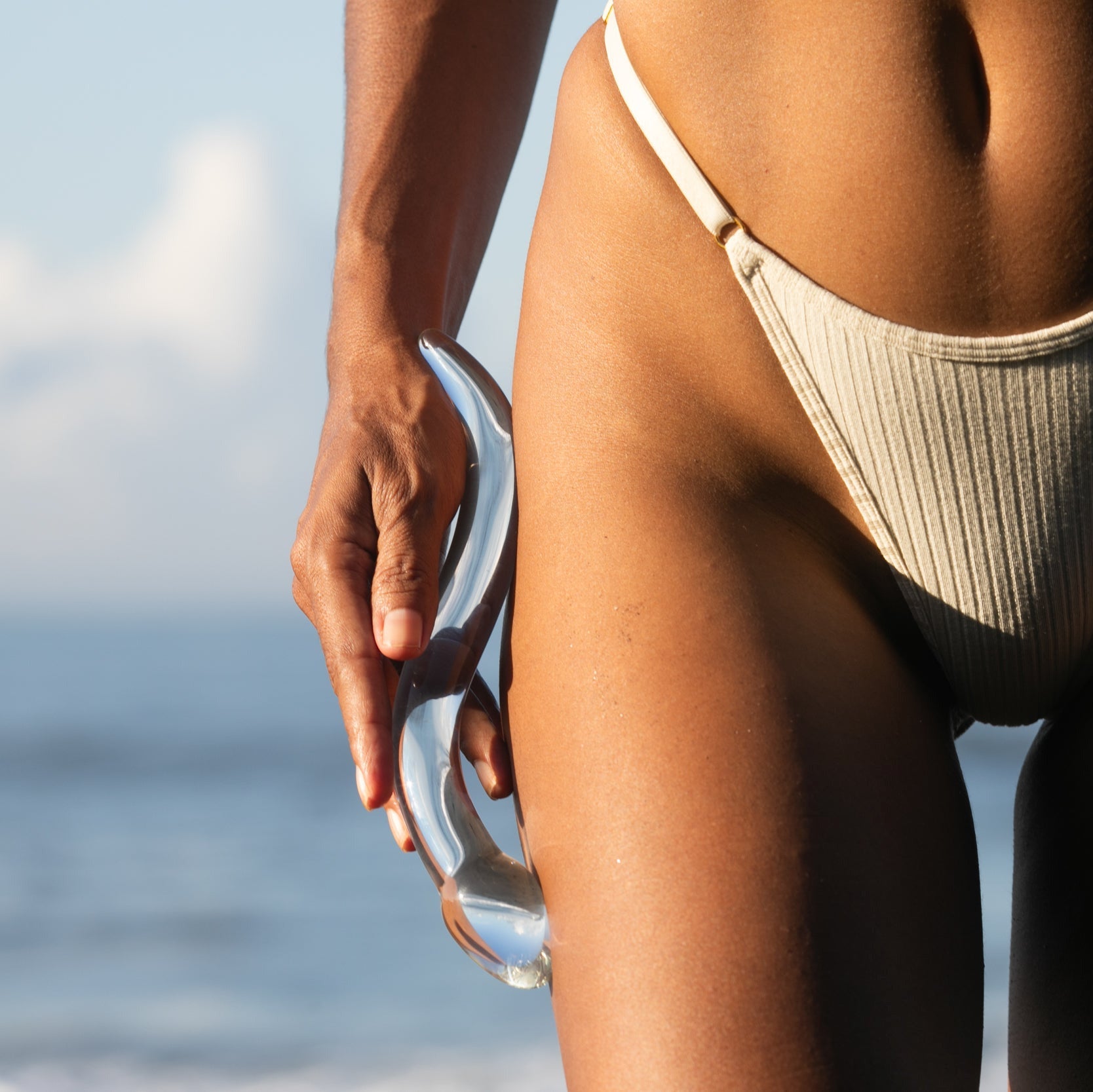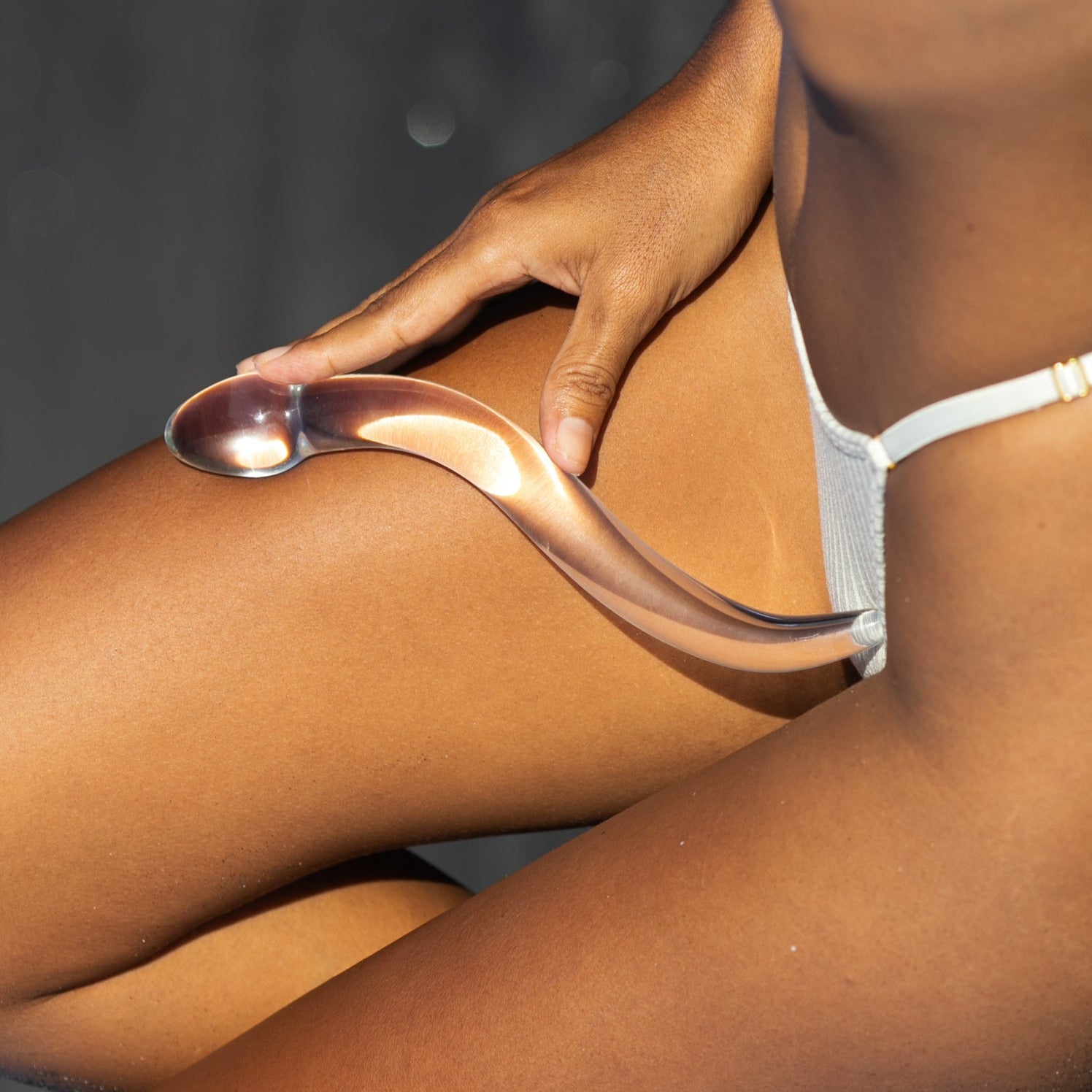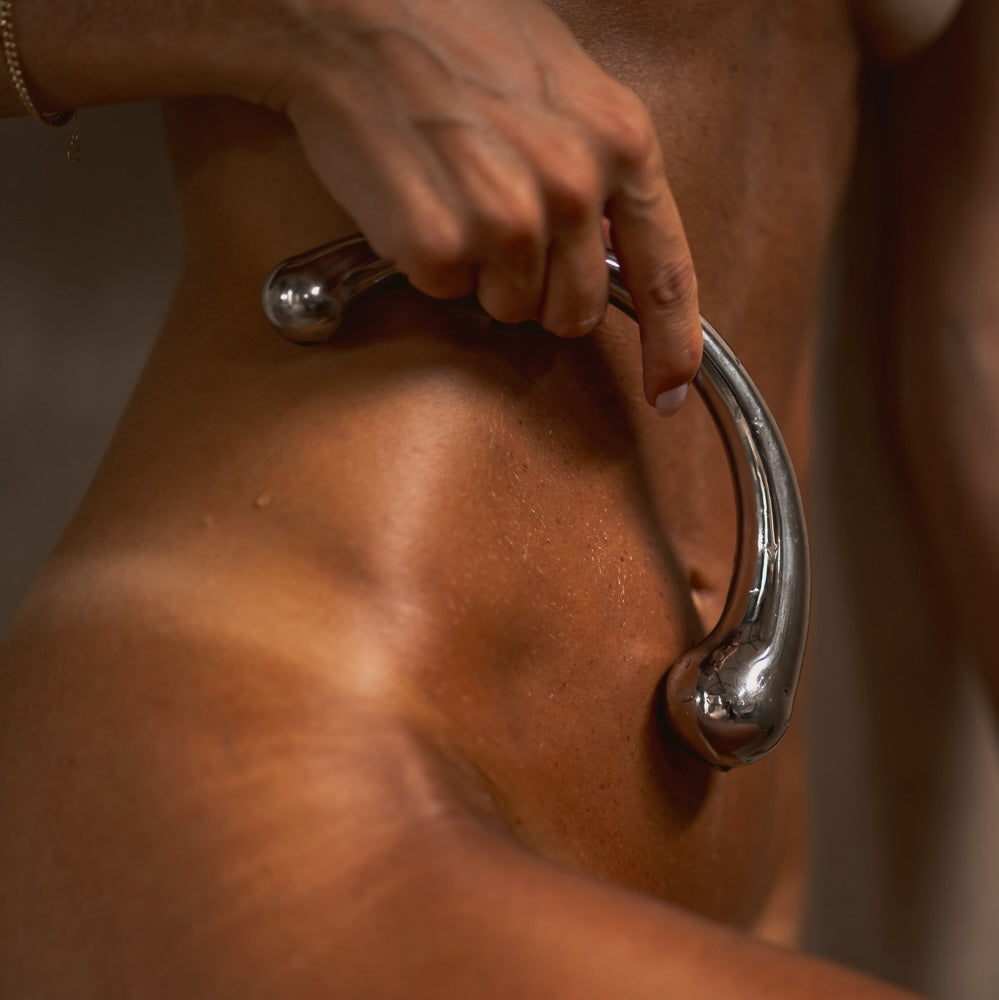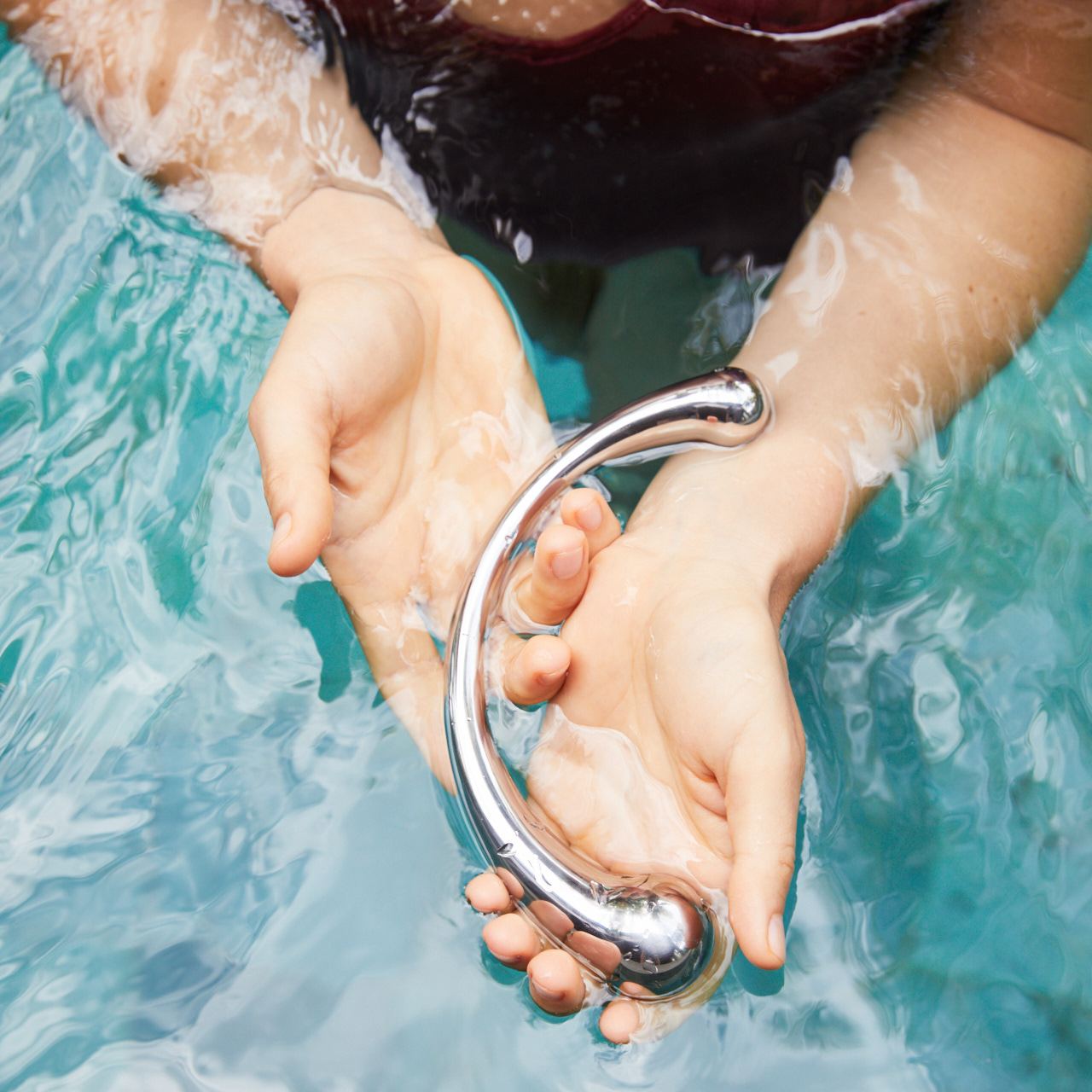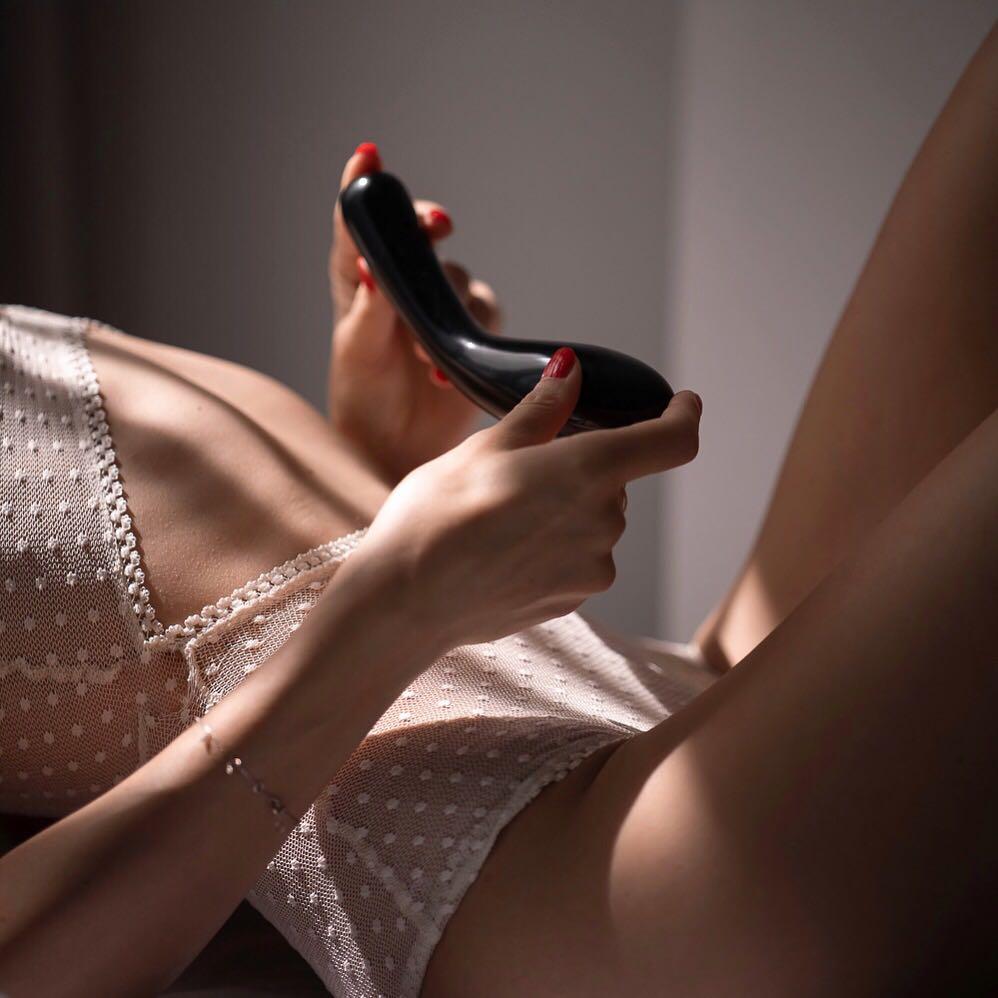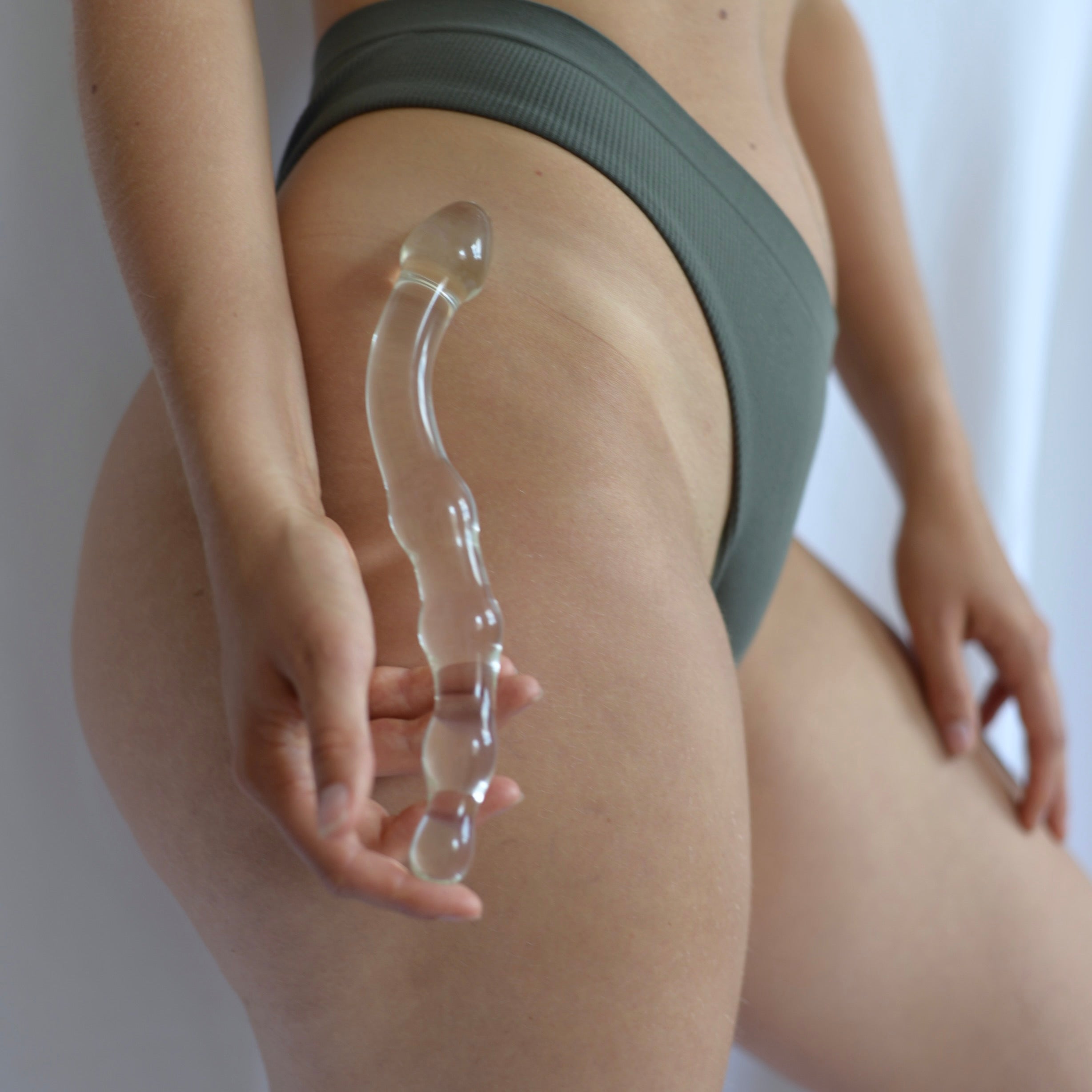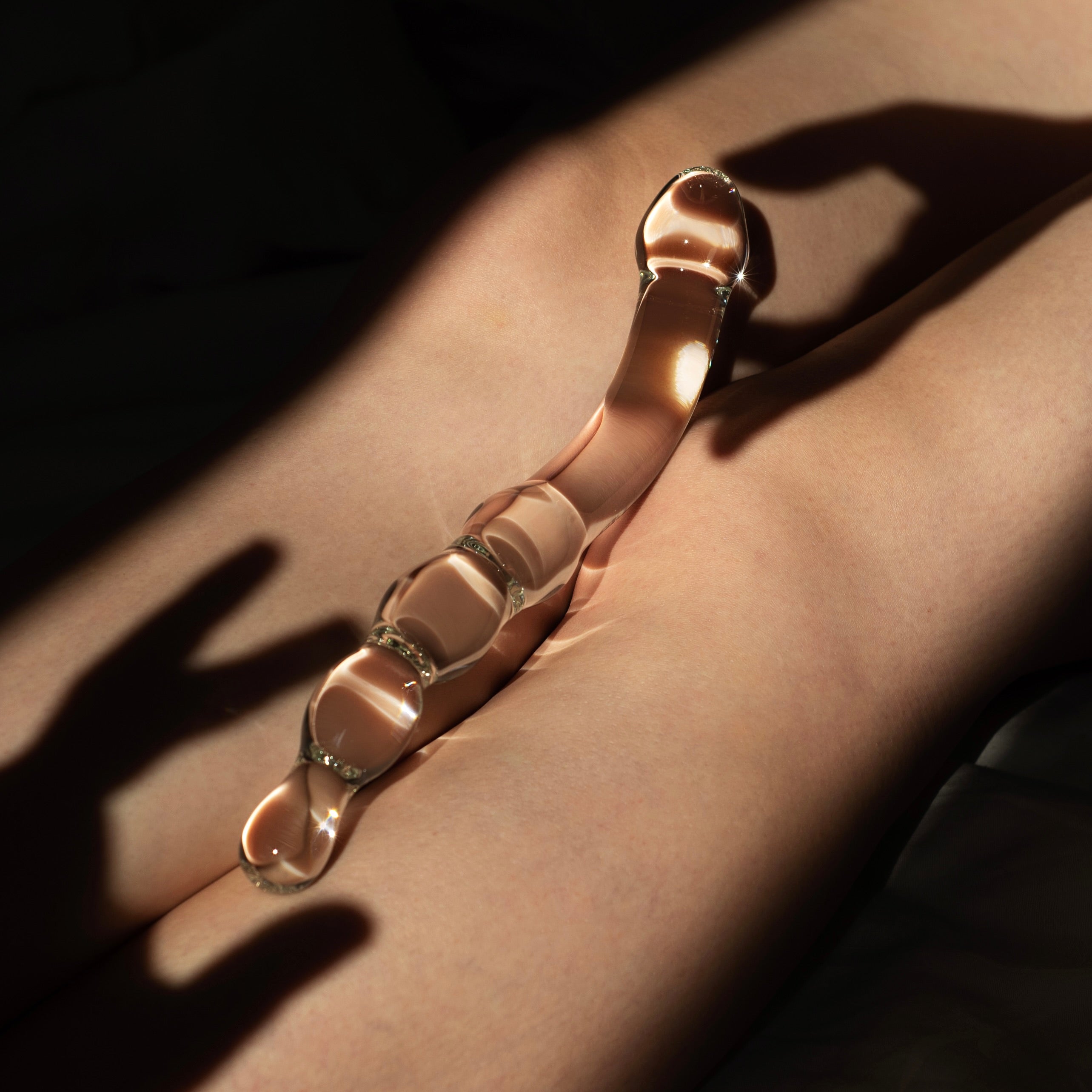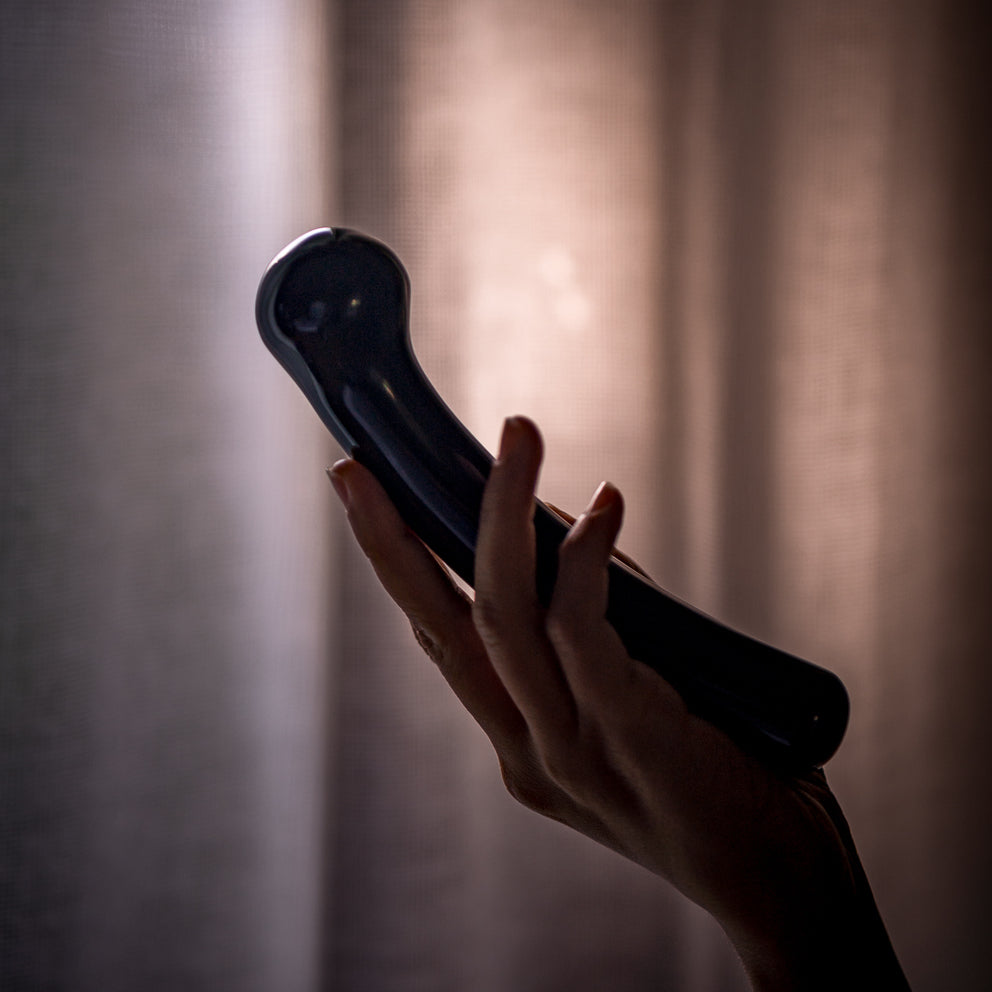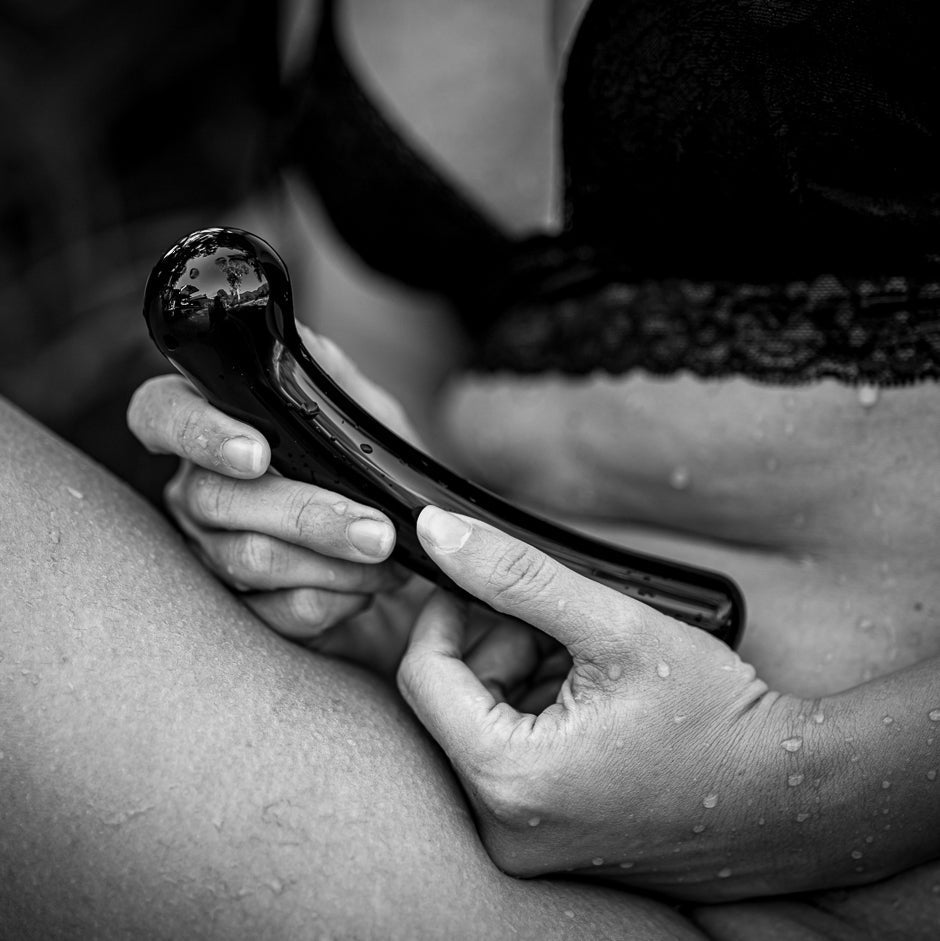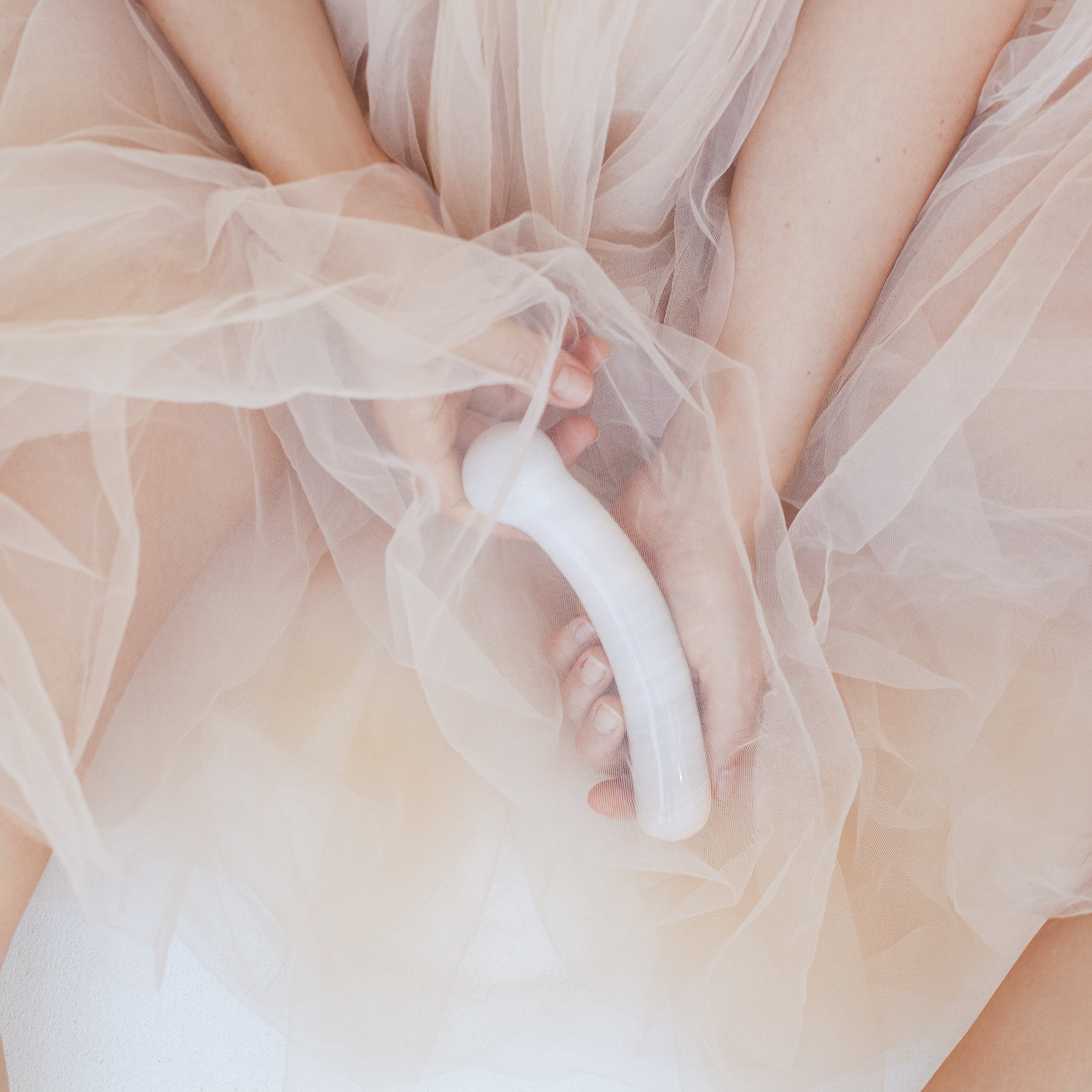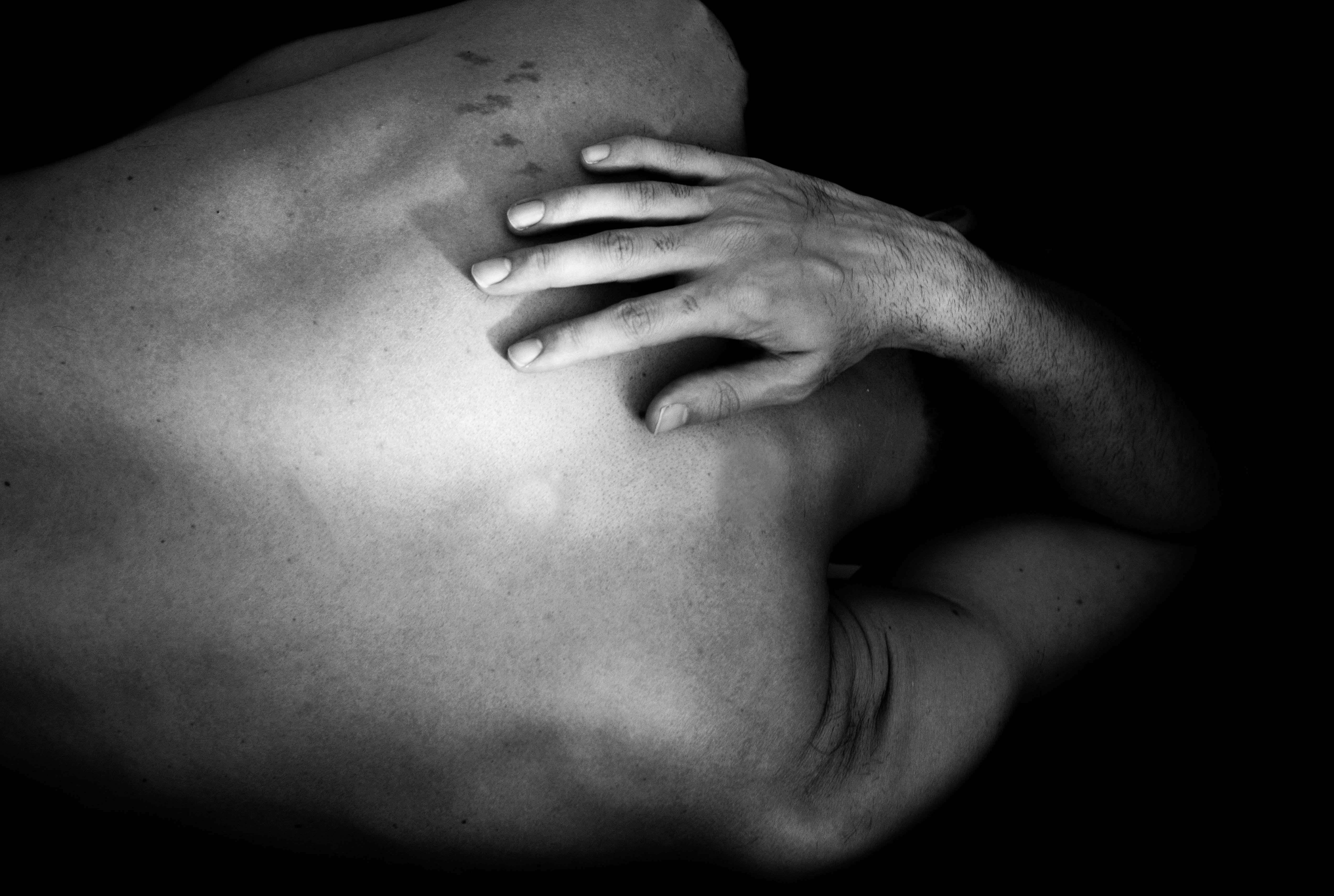Article: Can Every Woman Squirt? Unlocking the Science, Myths, and Truths

Can Every Woman Squirt? Unlocking the Science, Myths, and Truths
As a sex and pleasure coach, one of the most common—and misunderstood—questions I hear is: “Can every woman squirt?” or “Is squirting something that happens to everyone during sex?” These are honest, curious questions, and the truth is both simpler and more fascinating than most people expect.
Squirting, sometimes referred to as female ejaculation is the release of fluid through the urethra during heightened arousal or orgasm. While the two terms are often used interchangeably, they aren’t necessarily the same thing. Squirting generally refers to a larger, often more visible gush of fluid, whereas female ejaculation may involve a smaller, milky secretion from the Skene’s glands (sometimes called the female prostate). They’re related experiences, often triggered by similar forms of stimulation—particularly pressure and arousal around the G-spot or female prostate —but they are biologically distinct.
If you’re curious about how the two differ in origin, texture, and experience, you can learn more in our detailed post on the difference between squirting and female ejaculation.
What’s most important to understand is that squirting is not the same as vaginal lubrication. Lubrication happens as a surface response to arousal, while squirting or ejaculation involves a deeper physiological release. And just as every person’s body and arousal pattern are unique, the presence or absence of squirting varies widely. Some people may discover it easily; some learn with practice and others may never experience it—and it is all entirely normal.
The purpose of learning about squirting isn’t to chase a specific outcome or perform for a partner. Instead, it’s about understanding your body’s natural capacity for pleasure, getting to know your anatomy, and allowing yourself to explore sensation without pressure. Like all forms of pleasure, squirting is deeply personal—an intimate conversation between your body, your breath, and your awareness.
Understanding Squirting: Science and Physiology
Let’s clear something up right away: squirting isn’t a mystery, a myth, or a magic trick—it’s a completely natural physiological response that some bodies experience under the right conditions.
Modern research, including ultrasound imaging and biochemical studies, shows that the fluid released during squirting originates primarily from the female prostate, also known as the Skene’s glands*. The prostate is a network of glandular tissue embedded within the urethral sponge —a cushiony, erectile tissue surrounding the urethra. When aroused, this tissue swells with blood, much like the erectile tissue in the penis or clitoris, becoming more responsive to touch and pressure.
During intense stimulation, these glands produce a clear fluid that can build up and be released through the urethra. Some of this fluid may naturally mix with trace elements from the bladder, which is why the sensation can feel similar to needing to urinate just before release. But the composition of this fluid—containing enzymes like prostate-specific antigen (PSA)—is distinct from urine. It’s a unique secretion that reflects your body’s arousal response.
At the heart of this experience lies the female prostate, which largely overlaps with what many call the G-spot. But here’s where most people get it wrong: the G-spot isn’t a magical “button” waiting to be pressed. Instead, it’s more accurately described as a network of interconnected, sensitive tissue — a pleasure zone rather than a single point.
The texture, depth, and responsiveness of this area vary greatly from person to person. Some may feel a distinct ridge or spongy swell just a few centimeters inside the vaginal wall; others might find the area subtler and deeper. Anatomical research even shows there are 4 different types of female prostate structures, which may influence how each individual experiences arousal and ejaculation.
If you’ve ever wondered why one technique works for some and not for others—this is why. Pleasure isn’t one-size-fits-all, and understanding your unique internal landscape can be incredibly empowering.
For those curious to explore this more deeply, Onna’s Ultimate Guide to Squirting offers a fascinating look at the different anatomical types of the female prostate and how to recognise yours. Learning about your own internal anatomy is one of the most important steps in discovering what kind of stimulation feels right for you—and how to awaken sensations you might not have known were possible.
Ultimately, squirting is not about force, pressure, or luck—it’s about awareness. When you understand the science behind your body’s arousal system, you begin to trust its signals, relax into the experience, and let pleasure unfold naturally.
Prevalence and Variability
So, can every woman squirt? From a biological perspective, everyone with a female prostate and the associated anatomy has the potential to squirt. The structures that produce this response—the female prostate glands and surrounding erectile tissue—exist in most people assigned female at birth. However, potential doesn’t always translate to experience.
Studies and anecdotal evidence suggest that while a significant percentage of women can squirt, not everyone does—and not everyone wants to. Some experience a light trickle they barely notice, others a powerful gush. For some, it happens once in a lifetime; for others, it becomes a familiar part of their pleasure. These differences don’t indicate “ability” or “success”—they simply reflect the diversity of human bodies and responses.
Several factors influence how likely squirting is to happen:
- Anatomy– The structure, sensitivity, and responsiveness of the female prostate vary naturally. However, like any part of the body, this area can become more sensitised with awareness, arousal, and regular exploration.
- Arousal level – Deep arousal and full-body engagement are essential. The body needs time to swell, awaken, and relax before any kind of release becomes possible.
- Psychological comfort – Feeling safe, unjudged, and unpressured is one of the biggest factors. Anxiety or performance pressure can shut down arousal completely.
- Stimulation style – Technique and pace matter far more than intensity. And here’s a myth worth letting go of: porn isn’t education. The fast, aggressive thrusting often shown in mainstream media has very little to do with real pleasure. In fact, that kind of force can create tension rather than release. True arousal and ejaculation arise from consistent, rhythmic, and attentive stimulation, where the receiver feels grounded, safe, and fully connected to their body.
If you’re curious about how this works in practice, our Ultimate Guide to Squirting explores the specific techniques, rhythms, and pressure styles that actually support this natural response.
It’s also worth noting that hormonal shifts, childbirth, pelvic floor tone, and emotional connection can all influence how and whether squirting occurs. Bodies evolve—and so does pleasure.
In my experience as a coach, many people discover their ability to squirt later in life, often when they begin exploring their own pleasure without external pressure. When curiosity replaces expectation, and when hands, breath, and presence become tools of discovery rather than performance, the body often reveals sensations it’s been capable of all along.
How Squirting Feels and the Sexual Experience
Many people describe squirting as a wave of release—a deep, involuntary letting go that follows a slow build-up of pleasure, pressure, and excitement. It’s not always explosive or dramatic; sometimes it’s a gentle pulse, a rush of warmth, or even a soft trickle. What’s consistent across experiences is the feeling of surrender—a physical and emotional exhale where the body simply lets go.
For some, squirting arrives alongside a full-body orgasm, blending the two sensations into a single, powerful crest. For others, it happens separately, more like a release than a climax—a sign that the body has reached a threshold of arousal and relaxation so complete that fluid flows freely. There’s often a moment just before it happens when you might feel like you need to urinate. This is completely normal and one of the most common precursors to release. When the mind lets go of fear or self-consciousness, that urge often transforms into a cleansing, euphoric flow.
The physical sensations of squirting can vary widely. Some describe it as:
- A deep, throbbing release from the core of the pelvis
- A gentle internal ripple that feels both emotional and physical
- A rush of heat or pressure that suddenly dissolves into lightness
- Or even a calm, fluid sensation that feels grounding and satisfying rather than intense
Emotionally, squirting can be just as powerful. Many describe feelings of relief, laughter, vulnerability, and joy—a sense that something inside has opened. Others say it feels like a private celebration of connection with themselves or their partner. It’s not just about the body; it’s about the permission to experience pleasure without fear, guilt, or performance.
And that’s the key: squirting is not the goal. Whether you experience it or not doesn’t define your capacity for pleasure or sexual fulfillment. Some of the most profound orgasms and emotional releases happen without any visible fluid at all.
What matters most is learning to listen to your body. Notice your cues—the rhythm of your breath, the tightening and softening of muscles, the way your body moves toward what feels good. Focus on breathing through sensation rather than chasing it. The more you relax, the more your body trusts itself, and the more naturally any kind of release—whether a squirting orgasm, deep sigh, or trembling pulse—can happen.
Finally, let go of shame. Cultural myths and unrealistic portrayals can make people feel they need to “achieve” squirting to be sexually complete. That’s simply not true. Your body’s way of expressing pleasure is yours alone—beautiful, valid, and worthy of celebration exactly as it is.
Can All Women Learn to Squirt?
The short answer: yes—most can, but not all will—and that’s absolutely okay.
Every body holds the potential for squirting because the underlying anatomy exists in most people with vulvas, but potential doesn’t mean predictability. Like singing, dancing, or blushing, it’s something your body might express naturally or only under certain circumstances. The goal isn’t to “achieve” it—it’s to understand and honor how your own body responds to arousal, rhythm, and release.
Learning to squirt begins not with technique, but with education and awareness. When you understand your body’s erotic architecture—the female prostate, the G-spot region, and the way arousal builds—you replace uncertainty with curiosity. The more you know about what’s happening inside you, the easier it becomes to trust your sensations instead of second-guessing them.
The female prostate (Skene’s glands) and surrounding G-spot network are incredibly responsive when approached with patience and presence. This isn’t an area that responds to speed or force. Despite what’s often shown in adult media, vigorous “ramming” or pounding pressure rarely leads to pleasure—in fact, it can cause tension and numbness. Instead, think connection, not performance.
What works best is steady, curved, rhythmic stimulation that builds gradually. Imagine coaxing pleasure rather than commanding it—slow circles, gentle “come-hither” motions, or even stillness with light pressure. Combine this with deep breathing, pelvic relaxation, and mindfulness of your body’s cues. Many find it helpful to focus on the feeling of fullness and internal warmth rather than chasing a goal.
Some people learn through solo exploration, others with a trusted partner who listens and follows their lead. Communication is essential—especially around pacing, pressure, and emotional comfort. Feeling safe and unjudged allows the pelvic floor to soften, which is key to allowing any form of release.
If you’re curious to explore further, education is your best ally. Understanding your anatomy—especially your G-spot’s shape, depth, and responsiveness—can completely transform how you approach arousal. In fact, Onna’s Ultimate Guide to Squirting offers a beautifully detailed map of the different G-spot and female prostate types, along with practical, safe techniques for discovering what feels right for you.
Remember: learning to squirt is not a test of skill or sensuality. It’s a journey of trust, awareness, and surrender. When pleasure becomes about listening instead of performing, the body often surprises you in the most exquisite ways.
Social and Cultural Perspectives
Culturally, squirting has become one of the most misunderstood aspects of female sexuality. Mainstream media and pornography often portray it as a performance—something dramatic, exaggerated, and explosive—turning a natural bodily response into a spectacle for men. This distortion creates pressure: many people begin to wonder, “Am I doing it right?” or “What’s wrong with me if I can’t?”
Pleasure is not a competition. It’s not measured by volume, intensity, or the appearance of fluid. Yet, society often frames female sexuality through the lens of proof—visible evidence that something has “happened.” This mindset can rob people of the deeper experience of arousal, connection, and self-trust.
As a therapist and educator, I often see how this pressure shows up in intimate relationships. Partners sometimes treat squirting as a “goal,” chasing it through technique rather than connection. But genuine sexual exploration has nothing to do with ticking boxes—it’s about listening, communicating, and allowing pleasure to unfold naturally.
When we release the idea that there’s one “right way” to experience orgasm or arousal, something beautiful happens: authentic pleasure emerges. The moment we stop performing and start feeling, the body begins to respond in its own rhythm—often more freely, more deeply, and with far more satisfaction than any performance could ever create.
Socially, it’s also important to name that female pleasure has long been shamed, silenced, or misunderstood. Conversations around squirting can reopen that wound, especially for those who’ve been told their desire is “too much,” “too messy,” or “too emotional.” Reclaiming this part of our erotic landscape isn’t just about technique—it’s about rewriting cultural narratives that say women’s bodies must behave a certain way to be valid.
In workshops and sessions, I often invite couples and individuals to explore curiosity over control. Talk about what feels good. Celebrate the small moments of connection. Laugh, breathe, play. When arousal becomes collaborative rather than performative, the body naturally feels safer to let go—whether that leads to a squirting orgasm, a deep sigh, or a soft, quiet pulse of bliss.
Ultimately, squirting isn’t a symbol of skill—it’s an invitation to presence. It reminds us that pleasure is deeply personal, endlessly varied, and inherently sacred. When we approach it with respect rather than expectation, we not only deepen our connection with others but also with ourselves.
Conclusion
So, can every woman squirt? Yes, but not all will — and that’s perfectly fine. Squirting is a natural, beautiful expression of pleasure for some, but not a requirement for great sex. Your body’s responses are unique, and worth celebrating exactly as they are.
Instead of chasing an outcome, focus on connection, trust, and self-awareness. Learn your anatomy, communicate your desires, and allow yourself to enjoy exploration without pressure. Pleasure is not a competition—it’s an intimate conversation between you and your body.
FAQs
1. Can squirting be faked?
Yes, some people simulate the effect for performance reasons, but genuine squirting is an involuntary release of fluid through arousal.
2. Is squirting the same as orgasm?
No. Squirting can occur with or without orgasm—it’s a physical release, while orgasm is a neurological peak of pleasure.
3. How is squirting different from urinary incontinence?
The composition and mechanism differ. Squirting fluid often contains traces from the female prostate, not just urine.
4. Which techniques often lead to squirting?
Gentle, steady pressure on the G-spot or female prostate, combined with deep breathing and relaxation, are the most effective—forceful thrusting usually isn’t.
5. Can I learn more about my own anatomy and G-spot type?
Absolutely. Onna’s Ultimate Guide to Squirting offers a clear, body-positive exploration of G-spot types, anatomy, and mindful stimulation methods.
6. What about toys for squirting?
Exploring with specially designed G-spot or female prostate toys can help you find the right pressure and angle for your body. See our guide to the best toys for squirting to find ones that support safe, pleasurable discovery.
References:
* Florian Wimpissinger, Karl Stifter, Wolfgang Grin, Walter Stackl, The Female Prostate Revisited: Perineal Ultrasound and Biochemical Studies of Female Ejaculate, The Journal of Sexual Medici


